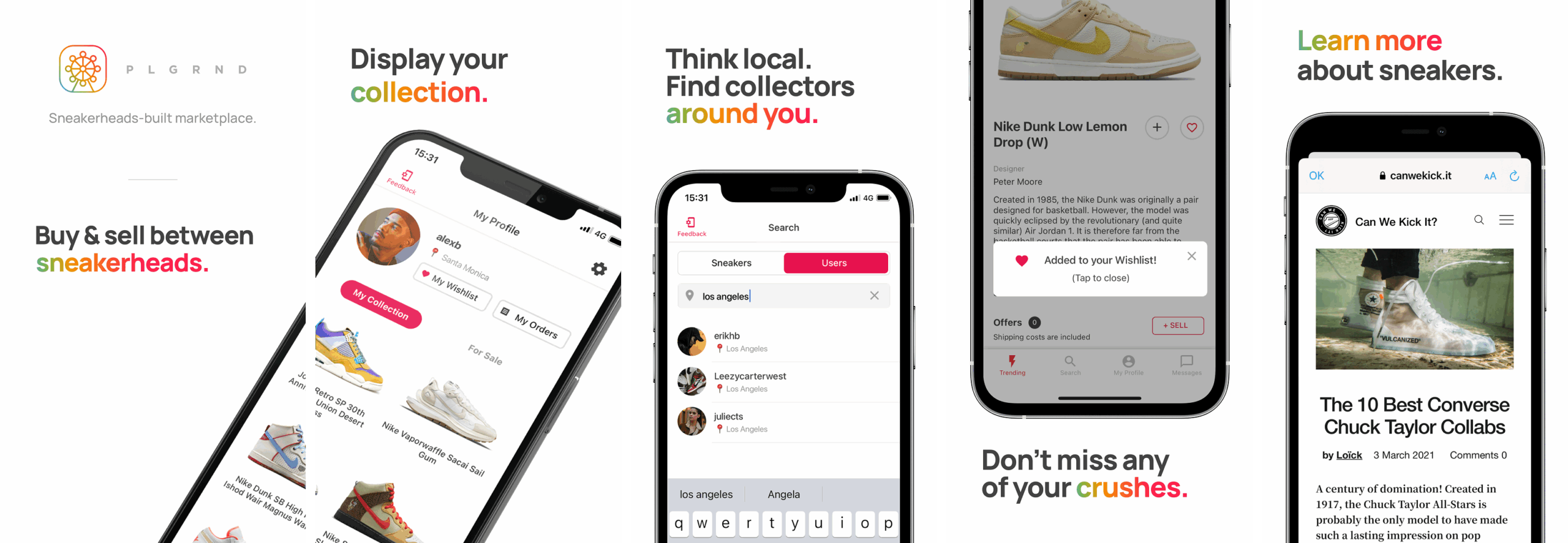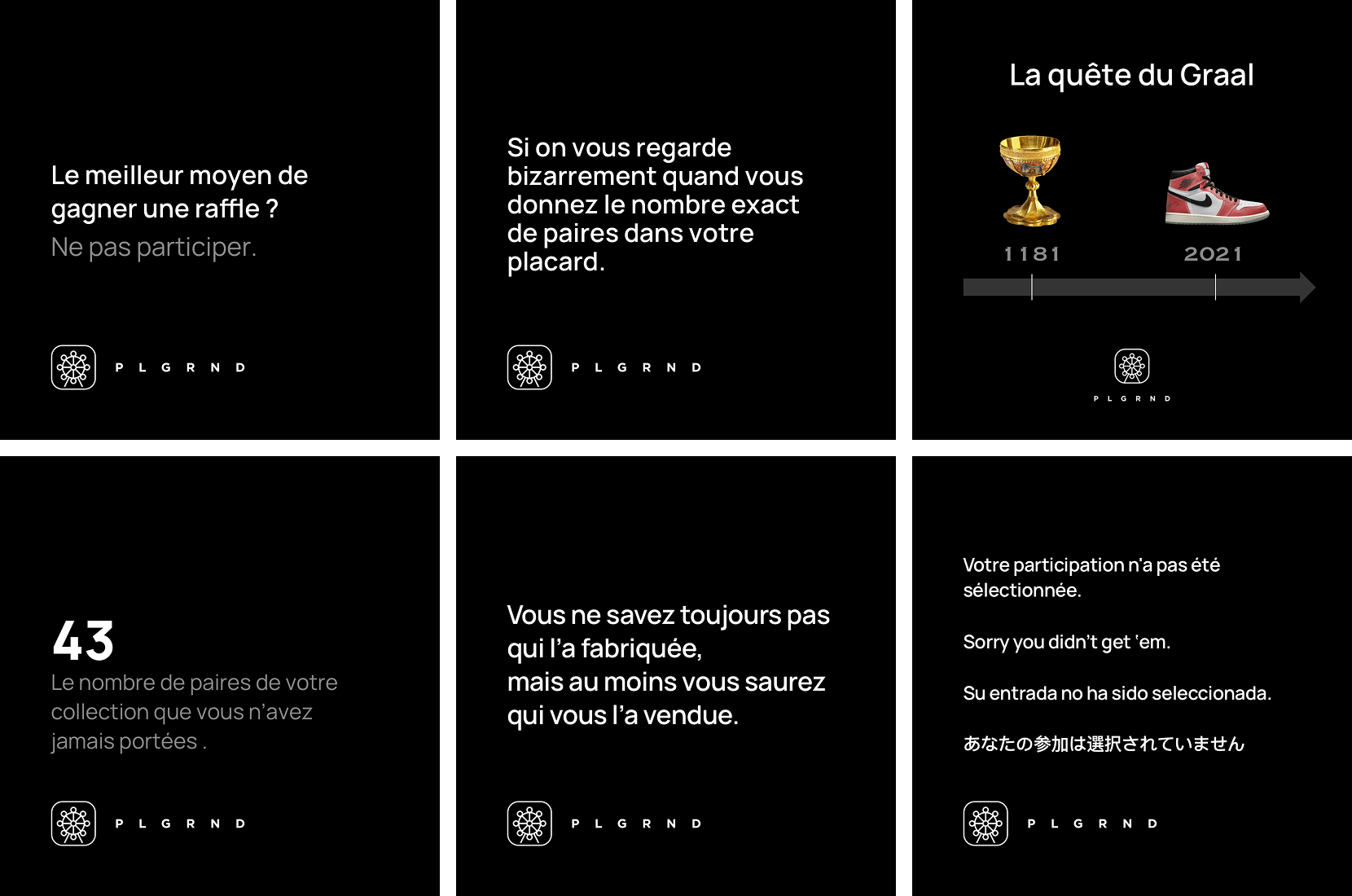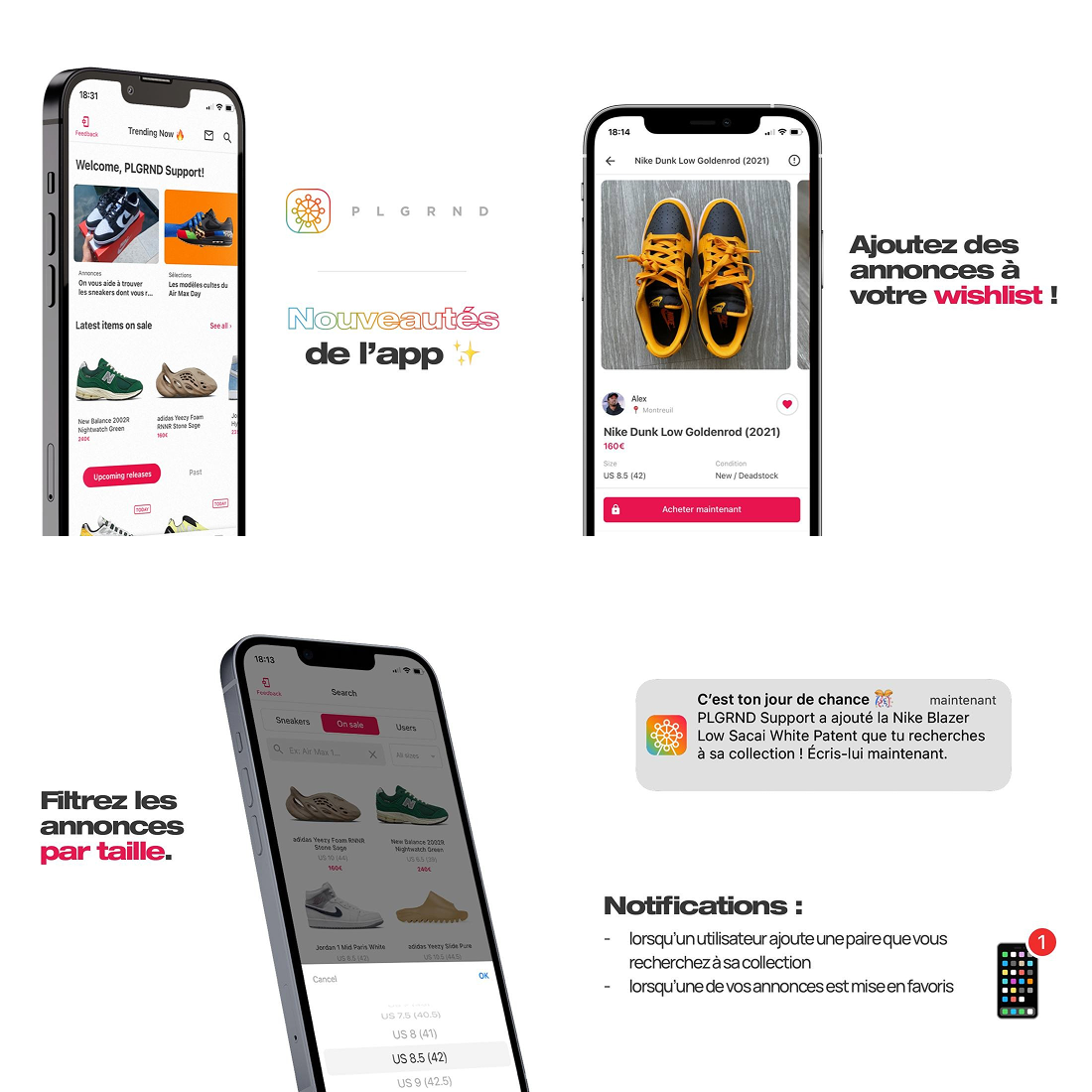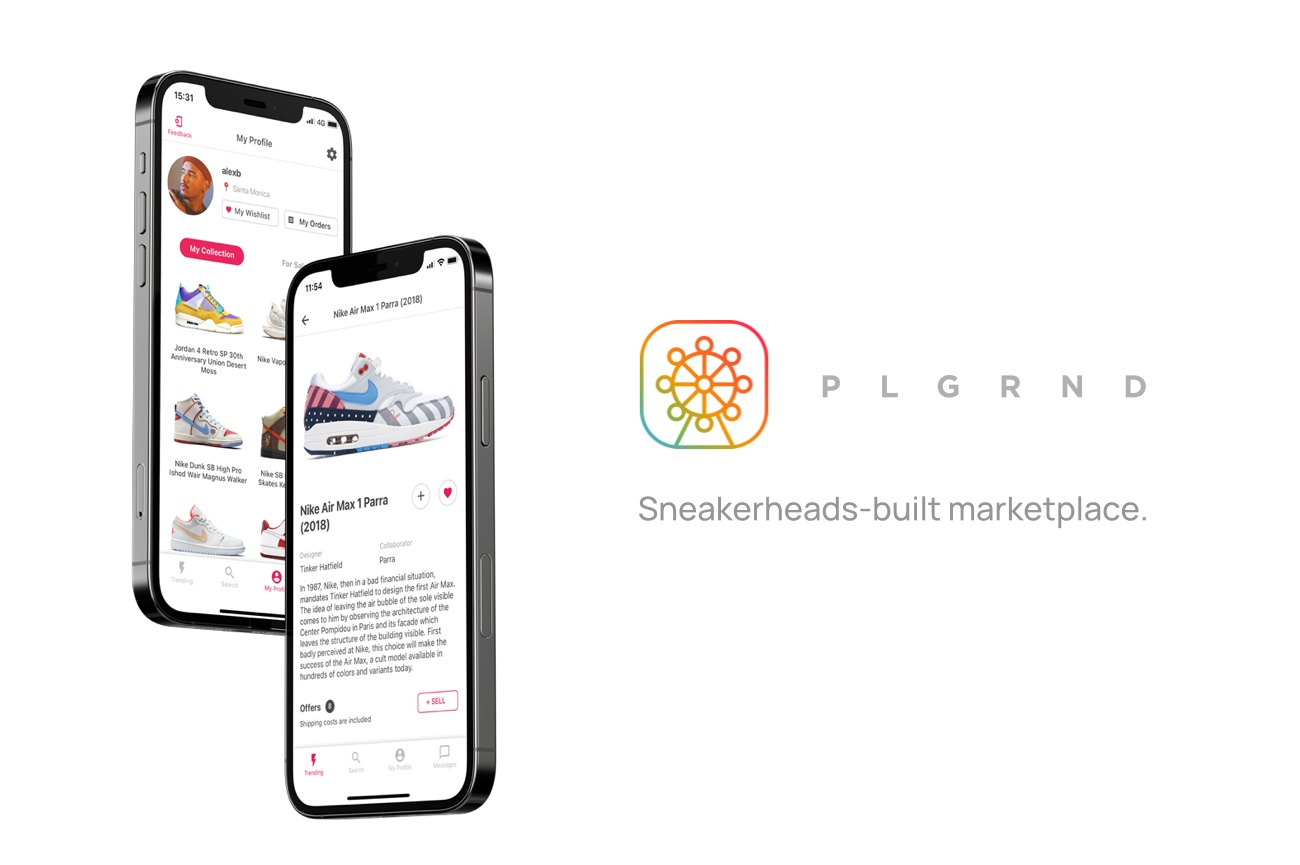
PLGRND (2020-2022)
Building a social platform for sneaker enthusiasts
The app is not available anymore, however here is a small prototype to show you what it looked like — or you can also read the case below :)
Context
In 2020, I co-founded PLGRND with a friend: a social platform and marketplace designed for sneaker enthusiasts. The goal was to create a dedicated space where sneakerheads could document their collection, connect with others, and buy or sell sneakers in a trusted environment. This project, run full-time over two years, allowed me to be involved in every aspect of the product: design, strategy, content, and launch.
Problem identified
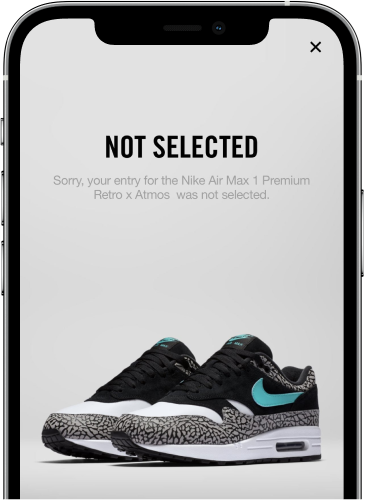
As reselling grew, the sneaker market became more competitive, speculative, and less accessible to true collectors.
We identified several pain points:
- Complex access to limited edition models, often via frustrating raffles.
- Market distortion caused by bots and speculation.
- No platform really focused on personal collections or the story behind the sneakers.
Our belief: the market was missing a community-first, culture-driven platform built by and for sneaker lovers.
User research
While I was creating a first design prototype, I conducted:
- 40+ qualitative interviews (around 1 hour each) with sneakerheads aged 20–40, mostly city dwellers who buy regularly.
- A quantitative survey shared in Facebook groups (200+ responses).
Key insights:
- High frustration with raffles and limited supply.
- Lack of trust in existing platforms.
- Strong desire for a more human, community-oriented experience.
This research directly informed our MVP scope and product priorities.
The first protoype — 'Add to collection' and 'Wishlist' features
Product definition
Our core value proposition: buy and sell sneakers between enthusiasts, while showcasing your collection.
Key MVP features:
- Profile creation and personal collection upload.
- Custom wishlist.
- Sneaker sale announcements.
- Chat with photo sharing.
- Integrated payment system.
- Upcoming release calendar.
- Sneaker pages with cultural and historical background.
- Search by model, size, or location.
We adopted an iterative approach, collecting feedback via an in-app form and prioritizing improvements based on user demand and technical feasibility.
Design & protoyping
The brand identity was built around four core values: expertise, community, sharing, and elegance.
I drew inspiration from social and cultural spaces like record stores or collector clubs, which led to the name PLGRND, derived from “playground.”
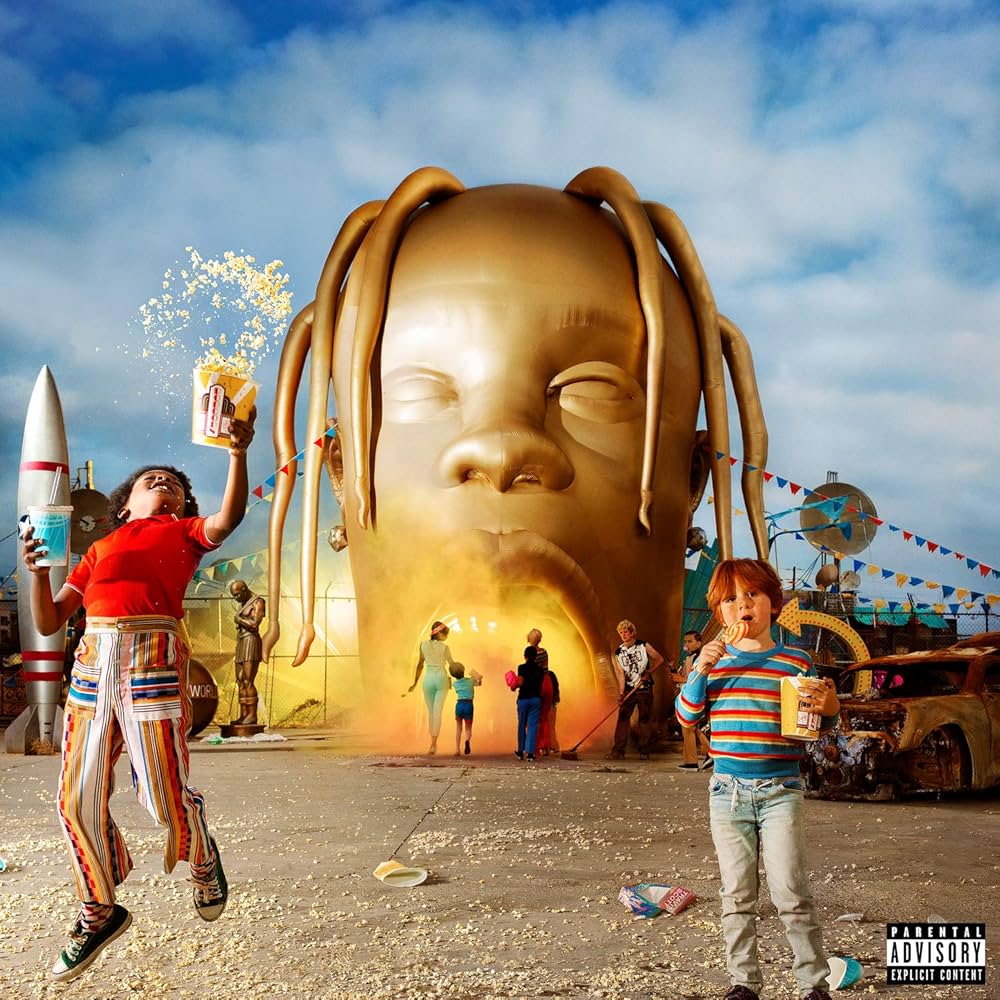
Visually, we leaned into a colorful, joyful aesthetic inspired by Travis Scott’s Astroworld — our logo featured a Ferris wheel with vibrant gradients to reflect a sense of celebration and nostalgia.
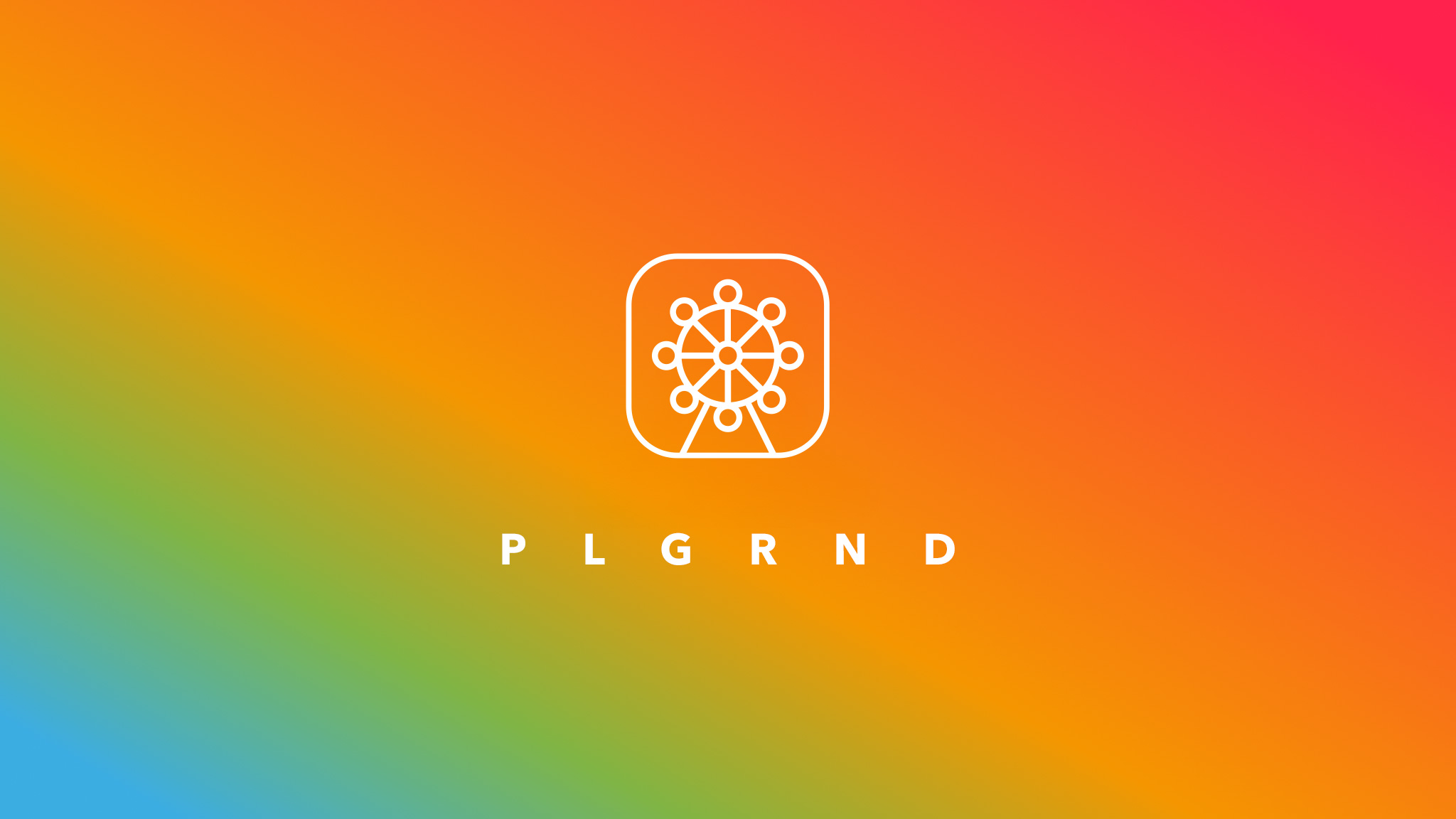
- Branding: Illustrator
- UI & prototyping: Figma
- Development: Adalo (no-code)
- User testing: 40 people tested the prototype during initial interviews
The UX approach was mobile-first, focused on simplicity, visual storytelling (through sneaker history), and Instagram-like inspiration for the collection-sharing aspect.
(Click to zoom-in)
Launch & acquisition
The app officially launched in September 2021.
Ahead of the release, we built:
- A mailing list of 2,000+ people
- A community through blog content and Instagram campaigns
- A pool of 50 beta testers
After a few weeks, we quickly reached 1,400 registered users.
Early signs were positive: users created many collections and published sale listings.
However, user retention remained low, likely due to the absence of push notifications, a still-limited marketplace offering, and the friction of downloading an app to try the service.
A glimpse of our launch campaigns on Instagram – mostly based on jokes and humor drawn from sneaker culture.
Iterations & improvements
User feedback led us to make several key updates:
- Improved search filters (including by shoe size)
- User-submitted sneaker database via a form
- Performance improvements on Android
- Push notifications: for example, when a user added a sneaker to their collection, those who had wishlisted it received a notification — helping boost interactions and potential sales
We gathered feedback through in-app forms and follow-up interviews.
Using Adalo’s built-in analytics, we tracked usage patterns and adjusted priorities accordingly.
We didn’t pivot the concept, but focused heavily on reducing friction, especially in the sneaker posting experience — avoiding the classic “empty club” effect for new users.
Key takeaways
What I learned:
- How to build a complete product from scratch in no-code — from concept to live app.
- How to define a realistic MVP and prioritize features.
- How to develop acquisition strategies and create content that attracts a niche audience.
About the market:
- Trust is absolutely critical in a competitive space like this.
- A web version would have significantly lowered entry friction compared to a mobile app.
- Marketing matters just as much as product quality when building traction.
On a personal level:
- Great collaborative experience as a two-person team.
- Learned to communicate clearly and stay aligned even during tough moments (bugs, diverging visions, UX challenges).
What I would do differently:
- Validate the product/market fit more thoroughly before development.
- Start with a web platform for accessibility.
- Build more exclusive, differentiated features.
- Invest earlier in marketing and visibility.
As a Product Designer:
This project helped me gain a deeper understanding of all the dimensions of product design — technical, business, and human.
It pushed me to focus more on real usage data, user feedback, and continuous iteration rather than assumptions.
